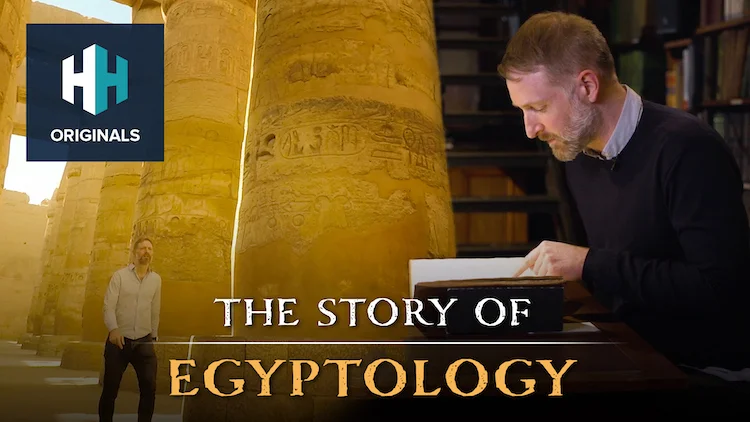

Her name deriving from the word for ‘powerful’ or ‘mighty’, Sekhmet was one of the most prominent goddesses in the Egyptian pantheon. According to myth, Sekhmet, a goddess of war and healing, could both spread disease and cure it, and more widely wield extreme destruction or award protection.
Sekhmet is most commonly depicted as a lioness, or a woman with the head of a lion, and her image was commonly used as battle insignia as both a leader in warfare and protector of pharaohs.
Highly feared and celebrated in equal measure, she is sometimes referred to in Egyptian texts as ‘She Before Whom Evil Trembles’, the ‘Mistress of Dread’, ‘The Mauler’ or the ‘Lady of Slaughter’. So, who was Sekhmet?
According to Myth, Sekhmet is Ra’s daughter
Ra, the ancient Egyptian sun god, became angry because humanity wasn’t following his laws and preserving Ma’at (balance or justice). As punishment, he sent an aspect of his daughter, the ‘Eye of Ra’, to earth in the form of a lion. The result was Sekhmet, who devastated Earth: she had a taste for blood and flooded the world with it.
However, Ra was not a cruel god, and the sight of the carnage made him regret his decision and order Sekhmet to stop. Sekhmet’s bloodlust was so strong that she wouldn’t listen, until Ra poured 7,000 jugs of beer and pomegranate juice (the latter of which stained the beer blood red) into her path. Sekhmet gorged on the ‘blood’ so much that she became drunk and slept for three days. When she awoke, her bloodlust was sated and humanity was saved.
Sekhmet was also the wife of Ptah, the god of artisans, and the mother of lotus god Nefertum.

Paintings of the Egyptian gods Ra and Maat
Image Credit: Stig Alenas / Shutterstock.com
Sekhmet has a woman’s body and the head of a lioness
In Egyptian art, Sekhmet is typically depicted as a woman with the head of a lioness. Sometimes her skin is painted green just like Osiris, god of the underworld. She carries the ankh of life, though when shown sitting or standing she normally holds a sceptre made of papyrus (the symbol of northern or lower Egypt), which suggests that she was primarily associated with the north. However, some scholars have suggested that she originated from Sudan (south of Egypt) where there are more lions.
She normally has a long-stemmed lotus flower on her right hand, and her head is crowned by a large solar disc, which demonstrates that she is related to the sun god Ra, and a uraeus, a serpent form associated with the Egyptian pharaohs.
 Watch Now
Watch NowSekhmet was the Egyptian goddess of war
Sekhmet’s fearsome reputation led to her being adopted as a military patron by many Egyptian pharaohs, since she was said to breathe fire against the enemies of Egypt. For instance, the powerful pharaoh Ramesses II wore the image of Sekhmet, and in friezes that depict the Battle of Kadesh, she is depicted as riding Ramesses’ horse and scorching the bodies of enemies with her flames.
At a statue erected for her at the Mut Temple, Karnak, Egypt, she is described as the ‘smiter of Nubians’. During military campaigns, hot desert winds were said to be her breath, and after each battle, celebrations were held for her as a way of appeasing her and stopping her cycle of destruction.

The Pharaon Tutankhamun destroying his enemies, painting on wood
Image Credit: Unknown author, Public domain, via Wikimedia Commons
Sekhmet could bring plagues to those who angered her
In the Egyptian Book of the Dead, Sekhmet is described as a keeper of cosmic balance, Ma’at. However, sometimes striving for this balance led to her adopting extreme policies such as introducing plagues, which were referred to as ‘messengers’ or ‘slaughterers’ of Sekhmet.
It was also said that she visited disease upon those individuals who angered her. As such, her nicknames the ‘Lady of Pestilence’ and ‘Red Lady’ allude not only to her plague-making but to blood and red desert land.
Sekhmet is also the patron of physicians and healers
Though Sekhmet could visit disasters upon those who angered her, she could also avert plague and cure diseases for her friends. As the patron of physicians and healers, when in a calmer state she would take on the form of the household cat goddess Bastet.
An ancient epithet reads that she was the ‘Mistress of Life’. Her ability for healing was so valued that Amenhotep III had hundreds of Sekhmet statues made to place in his funerary temple in the Western Bank near Thebes as a means of protecting him in the afterlife.
Sekhmet was also sometimes reported to have been the mother of an obscure lion god called Maahes, who was a patron and protector of the pharaoh, while other texts state that the pharaoh himself was conceived by Sekhmet.

Statue of Sekhmet, 01 December 2006
Image Credit: BluesyPete, CC BY-SA 3.0
Huge celebrations were held in her honour
A festival of intoxication was held every year to soothe the wildness of the goddess and replicate the drunkenness that stopped Sekhmet’s bloodlust when she almost destroyed humanity. The festival may have also coincided with averting excessive flooding during the beginning of every year, when the Nile appeared blood-red with the silt from upstream.
Historical records indicate that tens of thousands of people of all ranks would have attended the festival for Sekhmet, which would have featured music, dancing and the drinking of wine stained with pomegranate juice.
More generally, priests performed rituals to statues of Sekhmet every day as a way of appeasing her anger, such as offering her the blood of recently slaughtered animals.













